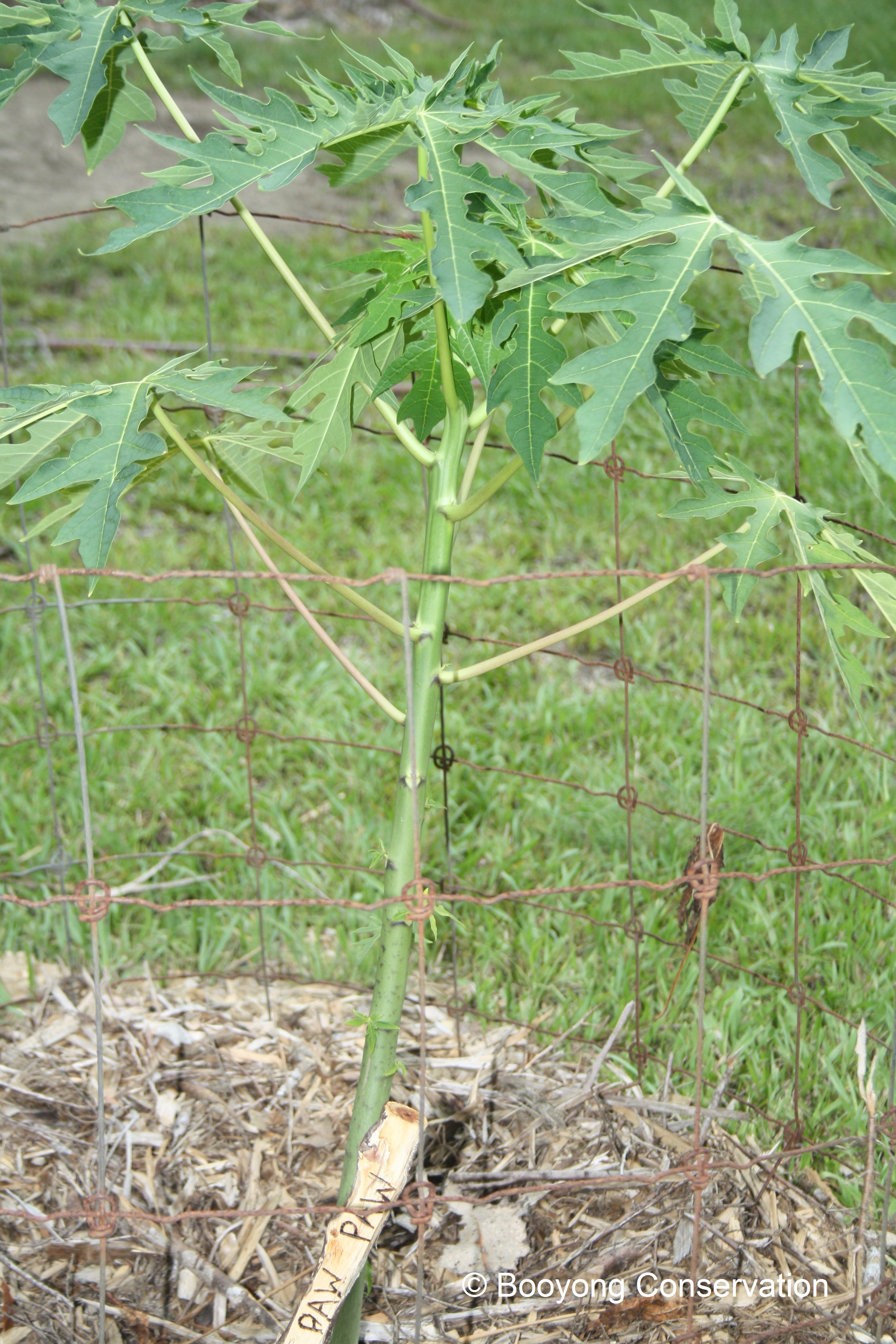I dream of making paw paw and mango salad from fruit on the farm.
Unlike other fruit trees the paw paw is expected to be productive for only six years. Pawpaw trees can be male, female or bisexual (meaning they produce flowers which have both male and female functioning parts). I believe the variety we’re growing at Booyong is bisexual and self-pollinating.
Paw paws grow well in warm climates and prefer a sunny and warm position protected from frost and wind. They like rich organic soil with good drainage which also helps prevent root rot. It is also a good idea to mulch well and not grow other plants at the base to allow for air flow.
Unfortunately, our young paw paw tree has had a rough start, first being eaten by the kangaroos and then being exposed to frost. We’ve netted the plant and will protect it from frost next winter. They are quite sweet and yummy, so we would expect the wildlife and birds to like them too. I imagine it will be an interesting challenge growing them, we’ll keep you posted! Gardening Australia recommend wrapping the paw-paw fruit in geo-textile to deter birds and flying foxes. Tie the fabric securely above the fruit and fasten it at the bottom with a bow so that you can easily undo the bow each day to check the ripening of the fruit. Placing tin around the trunk of the tree has also been suggested to prevent possums from climbing up the trunk.
Apparently, they like potash and can be fertilised every two – three weeks before flower buds form. A light seaweed spray every six – 8 weeks also wouldn’t hurt. Watering is recommended weekly during the growing season and twice weekly in drier weather, ensuring over watering doesn’t occur. In winter they like to remain as dry as possible. Spraying in Spring with copper hydroxide can assist in preventing fungal disease and a top dressing of gypsum at this time can also assist. If black spots appear under leaves spraying with copper sulphate can assist and they like crushed egg shells for calcium.
Harvest in from Spring to Autumn when skin has turned yellow. Paw paws can be eaten as fruit or in salads, they are quite a versatile fruit and will be a lovely addition to the food forest.
As the trees only fruit for six years propagation will be necessary and can originate from seeds or cuttings.
